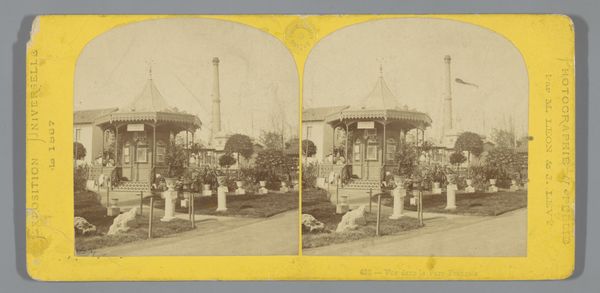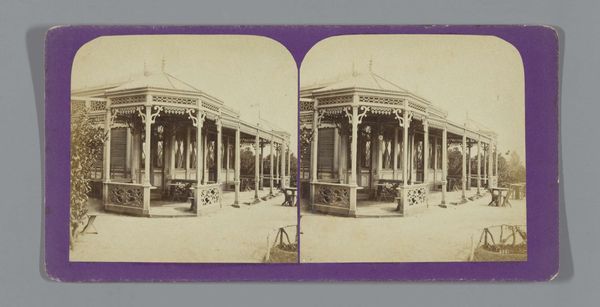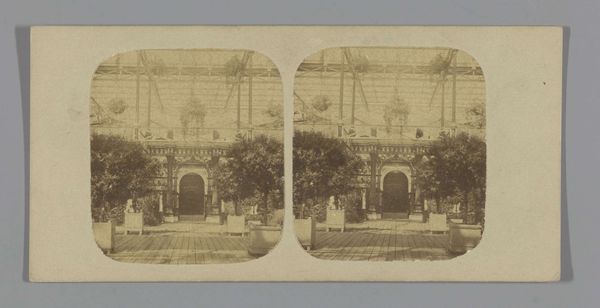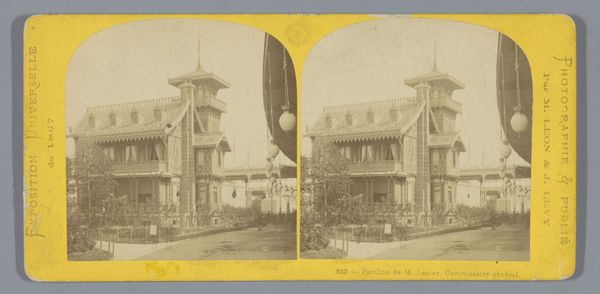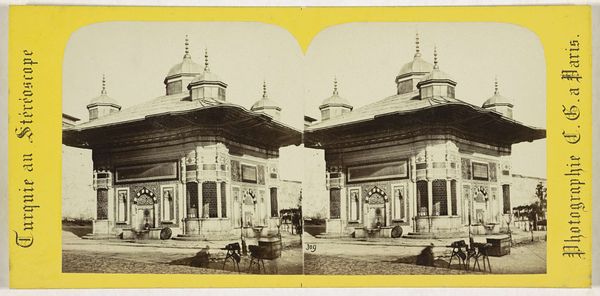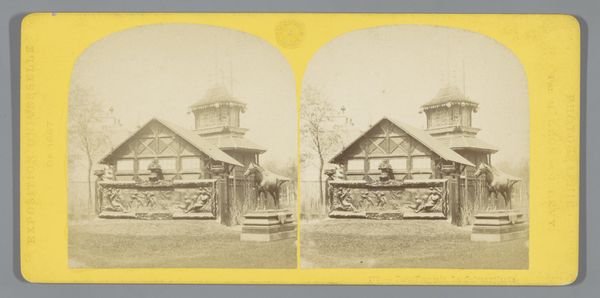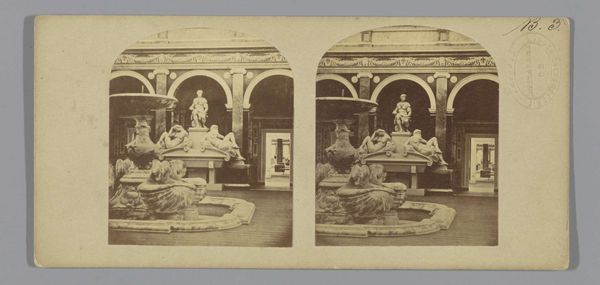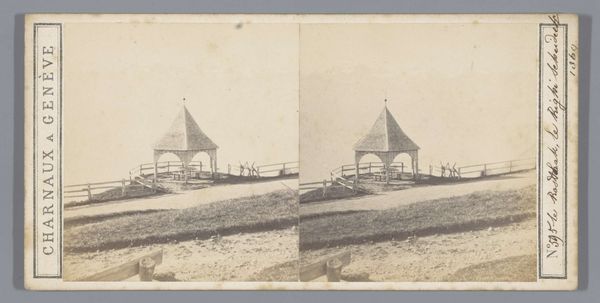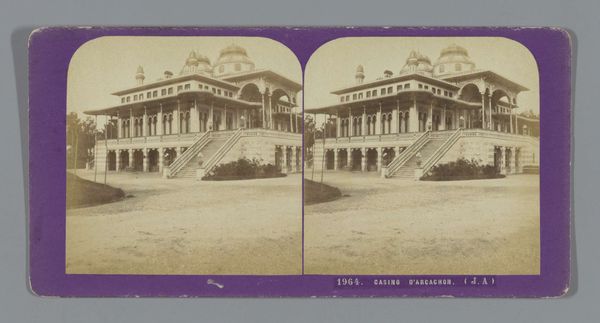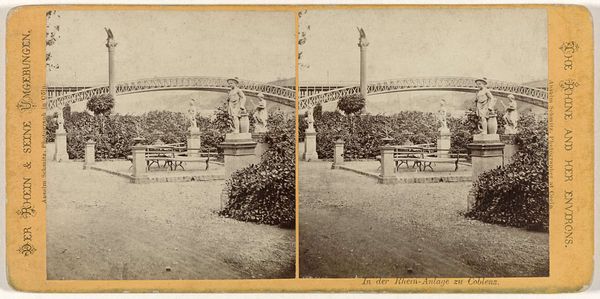
photography, albumen-print, architecture
#
impressionism
#
landscape
#
photography
#
orientalism
#
cityscape
#
albumen-print
#
architecture
Dimensions: height 84 mm, width 172 mm
Copyright: Rijks Museum: Open Domain
This is a stereoscopic photograph, made by Léon & Lévy for the 1867 Paris Exposition Universelle. The image shows the Paviljoen van de keizer, or Emperor's Pavilion, in the foreground, with a tower behind it. This photographic process, popular in the mid-19th century, produced a three-dimensional effect when viewed through a stereoscope. It's an early instance of mass media, relying on the division of labor and the industrialization of image production. The photographer captures the scene, but technicians and factory workers are needed to make the reproductions. The image itself promotes a vision of national power on display at the Exposition. The pavilion represents the height of luxury, a contrast to the conditions faced by the working classes who were, in a way, also ‘on display’ at the Exposition. It’s a potent reminder that even a simple souvenir can be deeply embedded in social and economic realities. This photograph is not just a picture; it is a manufactured commodity that reflects the relationship between labor, class, and consumption in the 19th century.
Comments
No comments
Be the first to comment and join the conversation on the ultimate creative platform.
